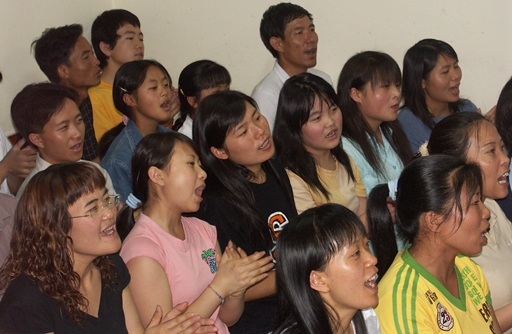The Future of the Church in China: Why China’s House Churches will Prevail
If you are a Christian from North America or Europe, when you enter the Holy Trinity Church in Kunming, China, the architecture of this beautiful, stately structure will immediately remind you of home, of traditional churches in the West. It even has a steeple. The atmosphere of quiet reverence will also seem familiar to Western visitors, especially to those with roots in mainline Protestant churches. You will also recognize virtually all of the hymns. Of course most Westerners will not understand the Mandarin lyrics, but the music will immediately call to mind the well-known verses of these historic songs. The choir will also sing tunes that are comfortably familiar. You will very likely hear a clear, biblical message that reflects a more conservative theology than that found in most mainline pulpits in the West. The closing prayer will be uttered by a member of the TSPM clergy,[1] a select group trained in seminaries modeled after their Western counterparts and appointed to lead virtually every segment of church life. The worship service will almost certainly end without any specific call for response on the part of the members of the congregation apart from silent prayer. The conclusion will thus mirror the fact that the congregation has little or no opportunity, apart from singing the prescribed hymns, to participate in the service. In short, Christians from mainline churches in the West who visit this church or other urban, TSPM churches in China, will be quite comfortable, for it will all seem very familiar.

When a Westerner participates in a house church service, your experience will be very different. You will likely enter into a city apartment or a village home. You will be greeted by a group of ten to twenty believers, possibly more. When the service starts, you will quickly be surrounded by the sounds of lively, earnest singing. The songs will flow from music quite different than anything that you have ever heard. The lyrics, if you were you able to understand them, would seem equally strange. They highlight themes from what appears to be another world. Utilizing largely rural imagery, the lyrics evoke a world of struggle and persecution, sacrifice and mission, courage and hope. The service will include the sharing of testimonies and prayer requests. This is a time that inevitably culminates in corporate prayer. Everyone is given an opportunity to contribute; everyone is expected to participate. The preaching that follows will center on a passage from the Bible and seek to apply this text to the life of the believers. This biblical message typically will be followed by much discussion. Various members of the church will share what they feel God is saying to them through this message. The service will often conclude with a specific call to action and always with prayer. After the service has concluded, the believers will share a meal and joyful fellowship. In short, it will all seem very different from traditional church services back home. The nature of the music, the structure of the service, the expectation of your participation, the character of the message, the discussion that follows, and the intimacy of the fellowship will all take you by surprise. You will recognize that you are in the presence of believers, but the unique (and, perhaps, if you are astute, the uniquely Chinese) character of what has taken place will be very clear.
In a house church service, everyone is expected to participate.
This is the real beauty, in my opinion, of the house church movement in China: it allows for the rich diversity that characteristics the body of Christ, and it does so in an authentically Chinese way. Worship in the house churches is more diverse in nature than in the TSPM churches, and it is also much more indigenous. A “one size fits all” approach to church life simply cannot contain the wonder and beauty of the body of Christ, globally or in China. This is true of worship styles, but it is also true of theology and church structure. It is especially true when the apparent uniformity is forced and contrived.
Category: Ministry, Winter 2017


